It was not long ago that the major complaint regarding .22 rimfire repeating rifles was they had a tendency to stop repeating.

Often these rifles had tubular magazines using little-stamped sheet metal parts powered by tiny wire springs to move cartridges out of the tube and into the chamber. Lots of use wore these parts out, and hard usage without cleaning caused them to bend.
Today the tubular magazine is pretty much gone, replaced by the ubiquitous detachable box magazine that many folks call a “clip.” Almost without exception, they are stamped, soft, sheet metal or plastic creations. Not only do they wear, but if dropped the feed lips or body will be dented. Reliable feeding can be a thing of the past.
When Ruger’s 10/22 came on the scene in 1965, everything changed. The Ruger detachable box contains a rotor similar to the centerfire Mannlicher-Schönauer and Savage M99. Made of a proprietary General Electric Corp. product called Celcon that is tough as grizzly bear toenails, and featuring a cast steel throat, the magazine is nearly indestructible. It’s also dead reliable. There are, however, two problems often noted by hunters.
The first is the rifle’s failure to lock the bolt open after the last round is fired. Making this happen would require modifications to both magazine and rifle. Doing so would add cost, so it won’t happen. The second item is the subject of this column: Being able to know at a glance how many rounds are in the magazine.
Esta historia es de la edición January - February 2019 de Rifle.
Comience su prueba gratuita de Magzter GOLD de 7 días para acceder a miles de historias premium seleccionadas y a más de 9,000 revistas y periódicos.
Ya eres suscriptor ? Conectar
Esta historia es de la edición January - February 2019 de Rifle.
Comience su prueba gratuita de Magzter GOLD de 7 días para acceder a miles de historias premium seleccionadas y a más de 9,000 revistas y periódicos.
Ya eres suscriptor? Conectar
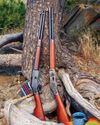
CIMARRON .32-20 Short Rifle & Carbine
In the heyday of Winchester Repeating Arms Company lever guns, it offered muskets, standard rifles, short rifles and saddle ring carbines.
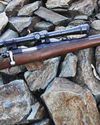
Remington's Model 722 and .222 Cartridge
It's easy enough to define what a varmint is, those pesky critters that tear up pastures, flower beds and all kinds of expensive crops people need for various reasons - most importantly, to make a living and/or something with which to feed themselves.

Coyote Bullets
What is Best for You?

Remington's 5mm Rimfire Magnum
Shooting a Classic
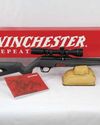
Winchester's New Wildcat
The Ultralight Rimfire Varmint Rifle

.223 Remington from .30-30 Winchester?
Multitasking for Varmints

LOADS FOR A .22 TCM
The .22 TCM first appeared commercially in 2012, chambered in a Rock Island Armory 1911-style handgun.
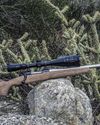
Everybody Loves Velocity
The 4,500-fps WSSM Project

A BOLT-ACTION FRANCHI 224 VALKYRIE
Testing New Loads
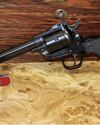
.22 Winchester Magnum Rimfire
Shooting Revolvers